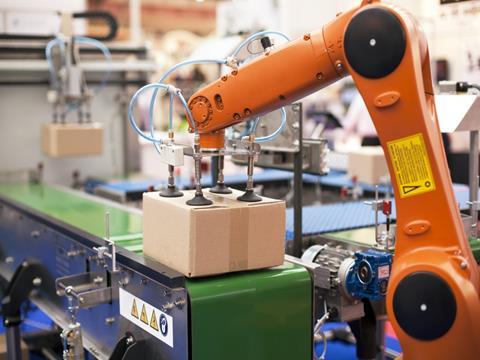
According to a survey by Gartner, supply chain leaders say that adapting to new technologies is the most important strategic change supply chain organisations will face five years from now, with next-generation automation and solutions that enable collaboration being key technology themes in 2022 alongside sustainability.
Dwight Klappich, vice president analyst at the Gartner Supply Chain practice, explains: “According to a Gartner survey among 211 supply chain professionals in December 2021, 34% of respondents said that adapting to new technology is the most important strategic change supply chain organizations will face five years from now.”
In 2022, supply chain leads apparently identify hyperautomation 2.0 as one of the main supply chain technology themes for 2022. According to Gartner, this is a business-driven approach that organisations use to rapidly identify, vet, and automate as many business and IT processes as possible through the orchestrated use of multiple technologies, such as artificial intelligence (AI) and machine learning.
Hyperautomation 2.0 apparently advances beyond AI and machine learning, beginning to integrate other technologies and tools. Gartner predicts that, during the next five years, hyperautomation 2.0 will be part of technological initiatives in warehousing, transport, and production, among others. This could include solutions such as intelligent remote fulfilment networks in warehouse or yard management domains, and personalised e-commerce applications.
The next trend Gartner identifies is expertise-centric, next-generation robots, which it says are moving into real-life production platforms and transforming a wide range of industries. These robots are reportedly more flexible and adaptive, meaning they can be applied to a wider variety of tasks.
In the future, Gartner says that companies will have heterogeneous fleets of robots, with tasks coordinated across different robots. This means that robots will interact with each other, and will also need to communicate with other types of automated equipment like elevators and doors.
A similar trend Gartner highlights is autonomous things, which encompasses robots as well as vehicles and drones that can augment traditional, manually intensive physical tasks with greater efficiency, clarity, and safety. Autonomous things can apparently work independently or in networks, while Gartner adds that they can enhance immersive work and customer experiences through added service efficiency, transparency, and safety.
Meanwhile, the ‘Analytics Everywhere’ trend links with the ability to deliver reporting, interactive data visualisation, and intelligence, including machine learning and predictive and prescriptive analytics. Gartner says that, with the ever-growing availability of data, AI can now be applied to transform data into information and deeper insights as part of a DSCT.
As for security meshes, Gartner says these are structured frameworks of governance, collaboration, and applied technology applications within the supply chain that aim to ensure that systems, tools, applications, and people are safe and secure at all times. Klappich says of this 2022 trend: “Security in supply chains is only as strong as its weakest link.
“Security mesh embraces the reality of dynamic, interconnected and increasingly digitalized supply chains by addressing an evolving nexus of threats posed by cyber, digital and data.”
Collaboration is another key supply chain trend for 2022. According to Gartner, ecosystem collaboration tools are digital technologies and services that create a collaborative work environment for people and generate new and continuous shared value opportunities.
With the challenges supply chains experienced during the COVID-19 pandemic, Gartner says that supply chain leaders have realised that many supply chains don’t have basic communication or digital connectivity in place with key stakeholders, such as multi-tier packaging networks. Gartner adds that ecosystem collaboration involves solutions and services that establish foundational network visualisation and mapping tools to support the advancement of real-time digital connections across people, data, machines, systems, processes, and things.
Finally, sustainability tools are another trend identified by Granter for 2022. The company says that sustainability tools are an evolving spectrum of applications, services and capabilities that support events associated with directives for sustainability, as well as environmental and circular economy impacts and mandates.
Gartner claims that sustainability tools enhance levels of digitalisation, collaboration, and visibility. This is crucial to formalise the processes and management disciplines needed for a progressive evolution of sustainability programs, the company adds.
According to Klappich: “Sustainability has impacts that span the entire value chain — from plan, to source, to make, to deliver, to the service domain. Supply chain leaders who don’t invest in tools that support a wide range of sustainability goals and metrics risk a significant impact on brand, company image and consumer value perception.
“There’s also a risk of stranded assets, vulnerability to carbon tax, unpreparedness for climate-related supply chain disruptions – and accordingly shareholder value.”
Therefore, Klappich concludes: “Supply chain leaders must take multidisciplined approaches for identifying innovative technologies and orchestrate the right technology investments at the right place and the right time.”

















No comments yet